Best smart TVs: the ultimate screens for entertainment
The best smart TVs for all purposes and budgets
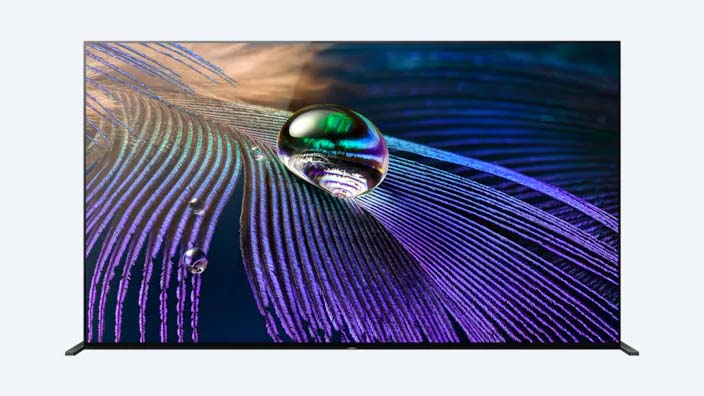
Finding the best smart TV can supercharge your TV or movie viewing, whether it's by enjoying the best TV shows streaming each week or binging through the library of the best streaming services.
A smart TV isn't just a screen — it's an entertainment hub, letting you access broadcast TV as well as streaming services and other functions too. Nowadays, almost every TV sold is a smart TV, with 'dumb' TVs being a thing of the past.
However, because of that, it can be hard to work out exactly which is the best smart TV for you. With so many different shapes, sizes and prices for sets on the market, and with the wide range of tech jargon words used to describe them, you can easily find yourself confused.
We're here to help you cut through the waffle and find the best smart TV for you. In this guide to the best smart TVs, we’ve picked the best screens in a number of categories.
Want a particular streaming platform inbuilt – or maybe you're just looking to level up your viewing options rather than buying a whole new set? We also have a guide to the best Roku TVs and devices, if that's more your thing.
However, if you’re looking for a budget model with as big a screen as possible or luxury, money-no-object OLED, we’ve got you covered. Read on!
The best smart TVs 2022: our recommendations
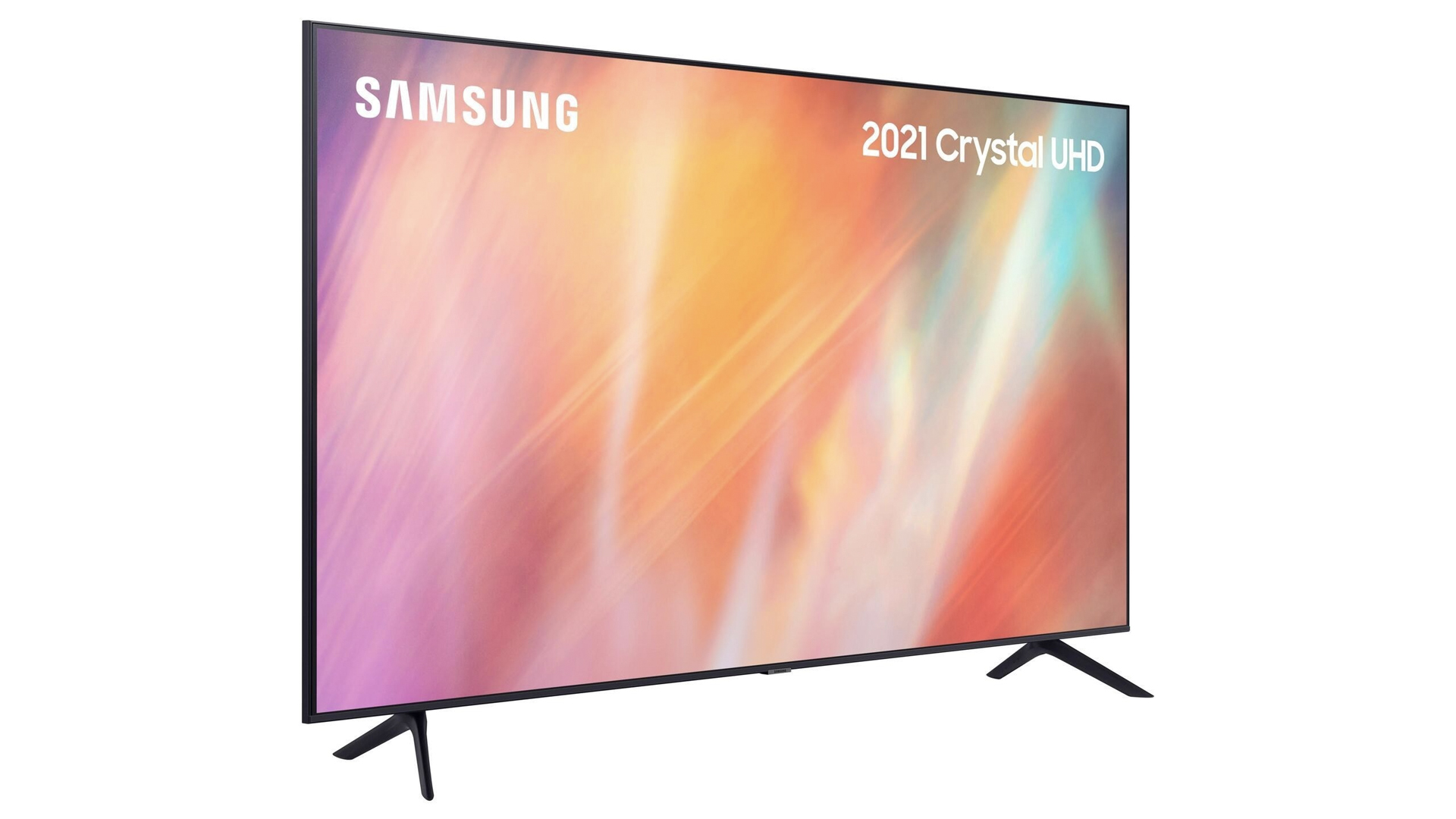
1. Samsung AU7100
Specifications
Reasons to buy
Reasons to avoid
The Samsung AU7100 is one of the most generously feature-rich budget TVs on the market today. It comes in an almost intimidating range of sizes so you’ll find the right model for you at a surprisingly low price, the build quality is excellent with an almost bezel-free design, and (the bit that really counts) the 4K imagery is thoroughly impressive for the price point.
There’s no Dolby Vision support here but HDR10+ is on board so you can enjoy even richer colors on Amazon Prime Video content. The Tizen operating system is intuitive and features all of the big-name streaming services and you’ll get an even richer experience if you have a Samsung Galaxy smartphone. All you have to do is gently tap your phone to your TV to share content and continue watching on the big screen.
If you want to level up even more, the AU8000 has slightly more functions than the AU7100, such as the Ambient Mode, plus Samsung's luxurious One Remote Control support – but we think the value of the AU7100 makes it a top buy.
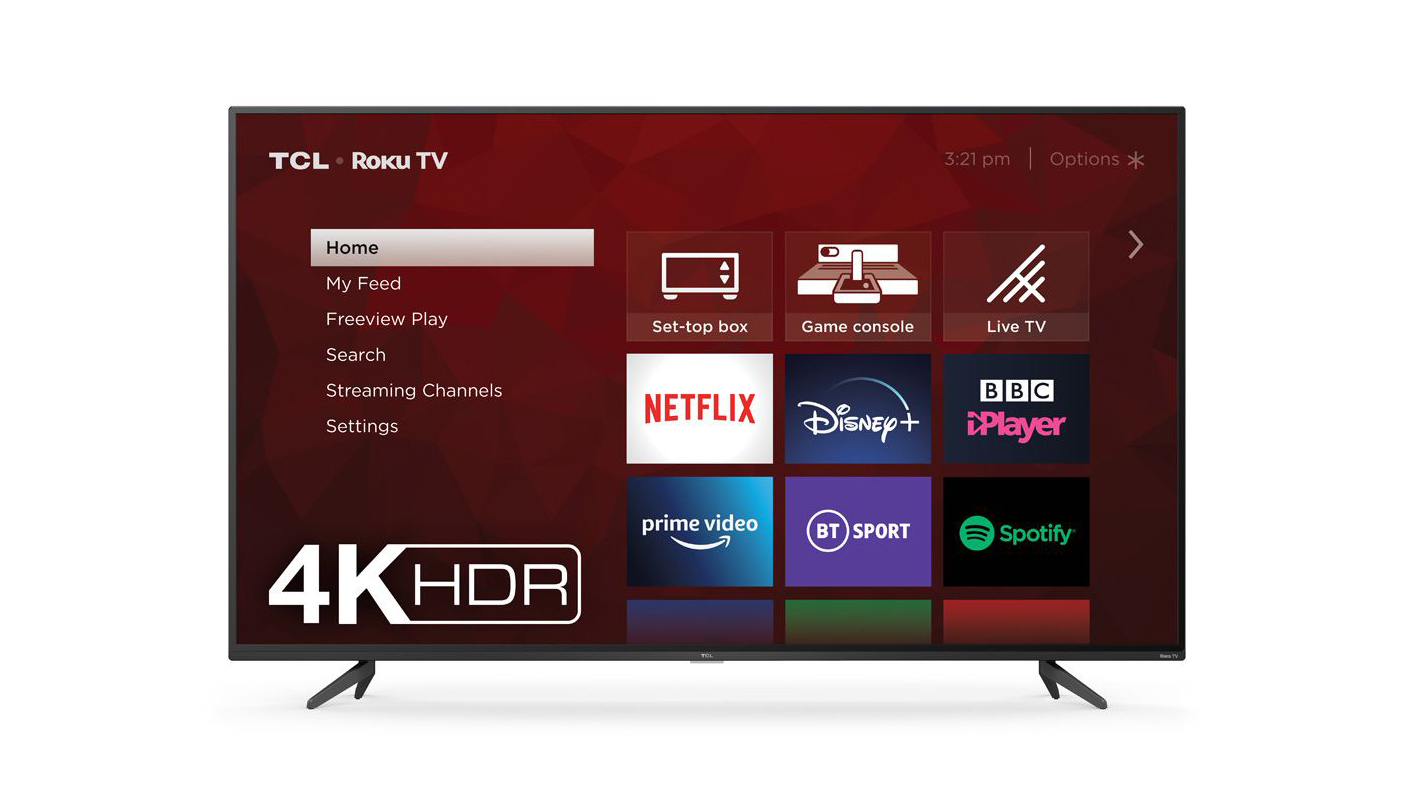
2. TCL RP620K Roku TV
Specifications
Reasons to buy
Reasons to avoid
As you can tell by some of the prices in this guide, it would be very easy to blow the budget on one of the best smart TVs. Thankfully, the TCL RP620K means you don’t need to overextend yourself just to mainline Netflix content in crisp Dolby Vision.
The Roku TV platform is excellent, with a strong focus on making it as easy as possible to access all of your favorite streaming services, plus it means there's no need to buy an external streaming stick. Especially generous is the presence of AirPlay for streaming content from your Apple devices. It’s not quite as bright as the competition — in a literal, not smart sense — but it more than makes up for it in functionality, especially if you’re looking for the biggest screen possible.
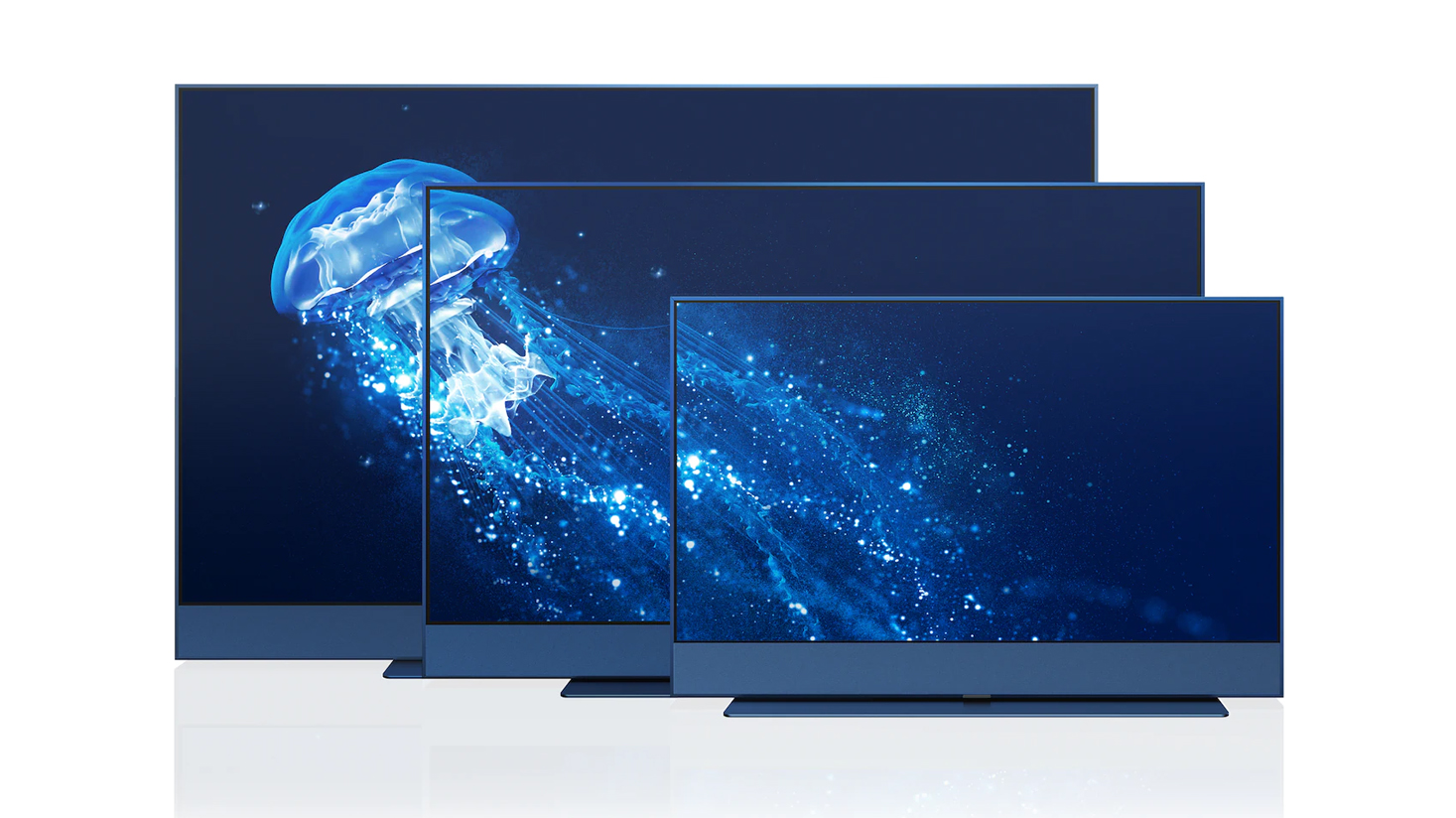
3. Sky Glass streaming TV
Specifications
Reasons to buy
Reasons to avoid
The roof access required for physical Sky satellite dish installation in the UK has often meant insurmountable hurdles for those looking for Sky TV.
Sky Glass changes all that and throws a high-quality television into the mix too. For a subscription price starting from £11 a month + £25 a month for Sky TV & Netflix — or an impressively low outright payment — you get access to Sky content and a QLED screen in a choice of colors. All you need is a broadband connection. Sky Glass, itself, is a TV from TP Vision and, while the image quality is good with bright colours, it’s the experience that shines —with ultra-fast loading and intuitive controls. Everything feels accessible with just a couple of clicks — unlike so many other smart devices. Just remember that the subscription costs will add up.
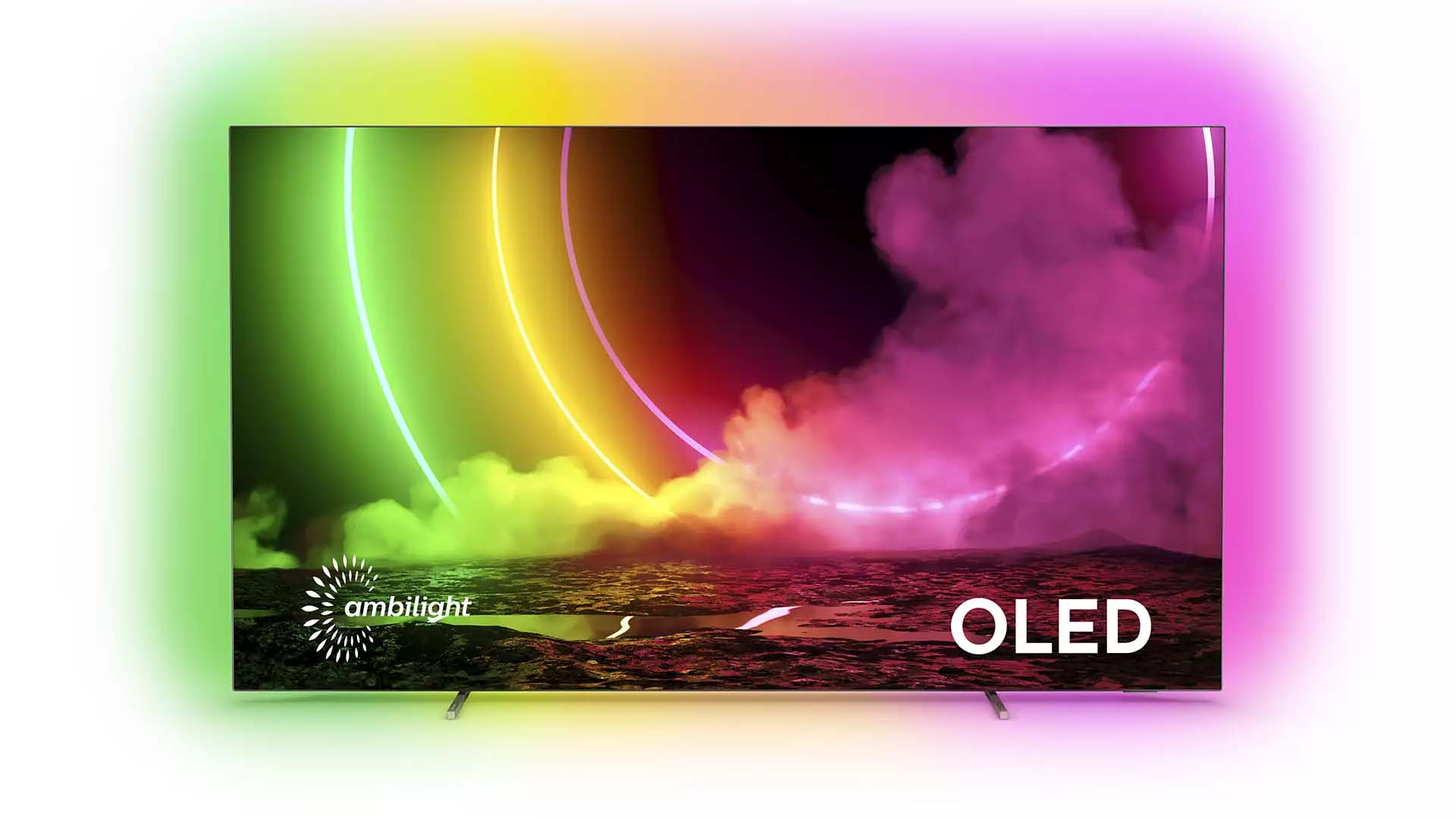
4. Philips OLED806
Specifications
Reasons to buy
Reasons to avoid
Stepping up to OLED picture quality is a true game-changer for your home entertainment, especially when you combo it up with Philips’ absolutely worth it Ambilight tech. LED lights on the back of the slim set perfectly extend what’s on-screen, making every movie and TV episode suddenly take over the room. And that’s not all you get for the price. If you’ve managed to get a PS5 or Xbox Series X (yes we know, one is much easier to get than the other), two of the four HDMI ports on the Philips OLED806 are of the HDMI 2.1 standard. This means variable refresh rate (VRR) and auto low latency mode (ALLM) as well as 4K gaming at 120fps, all of which means superior new-gen console performance. Add in excellent image fidelity and this is a strong OLED performer that doesn’t require a re-mortgage.
As a 2021-released TV, you'll probably see a few discounts too – which makes it an even more tempting proposition…
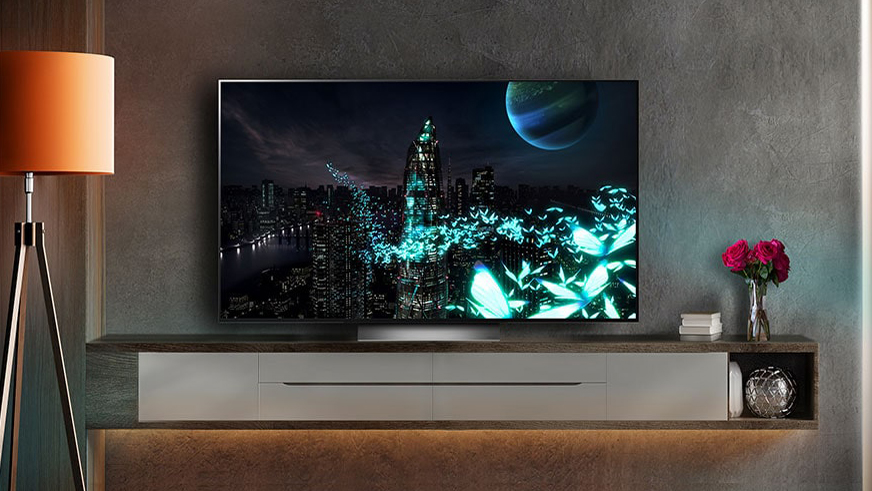
5. LG C2 OLED TV
Specifications
Reasons to buy
Reasons to avoid
The April 2022-release LG C2 OLED is simply one of the best TVs released this year. That's due to a number of improvements LG has made to this year's model compared to the LG C1 OLED (listed below).
You now get the new Alpha a9 Gen 5 processor plus ‘virtual surround sound’, which boasts the ability to upscale stereo content into 7.1.2-channel sound – aka excellent performance for a flatscreen TV, and you even get different sound modes to find an audio profile that suits your taste.
The C2 OLED also carries over something we very much enjoyed in the C1 OLED, namely the four separate HDMI 2.1 ports, meaning it's the perfect partner for your games console(s).
LG doesn't support the IMAX Enhanced or HDR10+ formats, and because you can now buy higher resolution flatscreen TVs (see the 8K Samsung QN900B, or the new upgraded LG G2 OLED which boasts slightly higher peak brightness) it's no longer the most cutting edge TV you can buy today, but for this money, you'll be hard-pushed to buy a better TV in 2022…
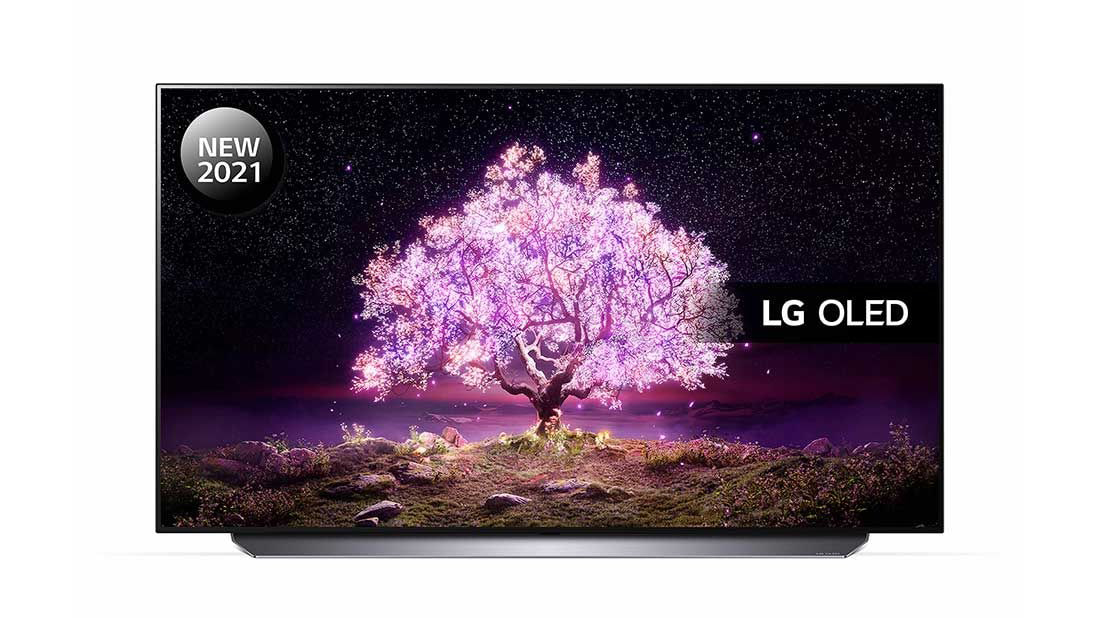
6. LG C1
Specifications
Reasons to buy
Reasons to avoid
LG is famous for its OLED TVs for very good reason (see above). While they are still expensive, the OLED range offers vibrant colors, great picture quality and upscaling, and the LG C1’s four HDMI 2.1 ports mean that it’s hungry to make the most of new-gen consoles. Plus, a new Game Optimiser mode with LG’s 2021 processor technology means that PS5 and Xbox Series X owners have less lag than ever before.
The C1 is also a great all-rounder – and it's just slightly older now, which means you might find a few deals. Even if you don’t have a console, Blu-Rays and TV shows shine on the OLED panel with sharp fidelity. Motion handling is especially deft here too, meaning that visuals feel more natural and realistic. It’s an expensive smart TV but absolutely worth the investment.

7. Sony A90J
Specifications
Reasons to buy
Reasons to avoid
If you’re willing to spend well into the thousands for one of the best smart TVs, the Sony A90J ticks nearly every box. There are a few missing TV apps, but that seems like a small quibble when the OLED visuals look so perfect, the upscaling of HD content is miles better than the competition and there are two HDMI 2.1 ports for full support of the new-gen console experience. Even better is the fact that there’s no need for an accompanying soundbar as the A90J uses what Sony calls Acoustic Surface Audio+ which means that the entire screen is a forward-facing speaker. There’s also full voice functionality with Google Assistant and Alexa, as well as AirPlay 2 and even a built-in Chromecast so you can always just stream channels from any of your devices.
The best Smart TVs: FAQ
What do certain TV phrases mean?
Choosing the best smart TV shouldn’t require constantly having to Google what something is. So, if you’re looking for a very quick answer to those questions:
- OLED is a much more expensive screen technology with richer colours and crisper, inkier blacks than LED.
- Quantum Dot OLED (QD-OLED for short) is newer than OLED and is billed as being able to combine the merits of OLED and LED technology to deliver an even better picture quality – and early signs are good, although the technology is still in its infancy
- VRR and ALLM mean ‘variable refresh rate’ and ‘auto low latency mode’ and are really only for people with new generation consoles
- The difference between HDMI 2.0 and HDMI 2.1 (which stands for High-Definition Multimedia Interface) is all about refresh rate and is important for gamers.
- eARC (aka Enhanced Audio Return Channel) is the next generation of ARC, which comes via your TV's HDMI input. It’s a feature that arrived with the most recent HDMI 2.1 specification. The main benefit of eARC is a big boost in bandwidth and speed – which means you'll be able to send higher-quality audio from your TV to your soundbar or AV receiver.
What size TV should I get?
Good question: it's not just about the size of your sofa any more – TV tech surpassed that idea years ago. We'll come right out with it: you really need to go with 4K (aka Ultra HD) resolution and be sure the model you've got your eye on has High Dynamic Range (HDR) support in 2022. These factors are emphatically the most import when it comes to TV picture quality.
Now, nobody ever said "Oh I wish my TV was that bit smaller", did they? However, the bigger the 4K screen, the more you'll need to pay to bring it home – but to get the most out of all those glorious pixels, you'll want to go as big as your budget allows.
Data from Statista tells us that the average size of a TV in the USA in 2022 is 50 inches, (up from just 22 inches in 1997! Sweet…) and we have to agree that bigger is better; so you shouldn't feel guilty about splurging if you want to.
But we cannot categorically tell you which size to go for against all others. Wouldn't life be boring if one size really did fit all?
Which smart TV OS is the best?
Roku, WebOS, Android TV or Tizen? The operating system you buy (which comes built-in with your box-fresh TV) will intrinsically affect your viewing pleasure – so which is top dog? That largely depends on personal preference (what you like, what you might have used before, how well it is implemented within your chosen TV) but still, we can guide you…
Android TV is most ubiquitous, however, Android being Android, different TV manufacturers use the platform in different ways – with varying results. That's not to say Android is bad! It's just, it varies…
Now, Tizen (is very good and) is the sole preserve of Samsung, and WebOS is LG's smart TV operating system. The former we like very much indeed, but the latter might actually edge it, for us. Why? This OS is all about the launch bar at the bottom of the screen. Here is where you find all your apps and settings, but the best bit is that you can tweak the order of the bar so the apps you use most frequently show up first. Good, right?
Finally, Roku is super-popular in the States. The interface is slick and likeable, with a universal search function, easy app access, stores to purchase content should you wish and a personalised feed of upcoming shows you might like.
Roku TVs tend to be quite affordable too. TCL, Hisense, Philips, Insignia, Sharp, RCA and Hitachi all make TVs with the Roku smart TV platform as their beating heart.
How to choose the best smart TV for you
When it comes to choosing the best smart TV for you, there are a few key elements to think about. The biggest element (literally) is the size of screen you’re looking for. If this is going to be your main living room TV, think about where it’s going to go and the screen size you’re comfortable with. Whereas ten years ago we were happily watching 32-inch TVs, now we’ve got desktop PC monitors that size and the majority of smart TVs start at 43-inches.
Once you’ve decided on the space that’s going to be taken up by your new TV, it's time to think about your budget — as the best smart TVs range massively in price. A cheap TV will give you more screen for less, while one of the bigger manufacturers might be more expensive but also more feature-rich — with tech like Dolby Vision and HDR10+. Choosing the best smart TV is all about balance.
And then there’s the tech that makes it smart. When you’re choosing the best smart TV, you want to make sure it has all of the streaming services and functionality you want. Whether Disney+ is a must or you want to stream content from your iPad or iPhone with AirPlay, you need to check the small print to make sure your chosen TV has everything you need. There are always streaming sticks out there to upgrade the smart experience but if you don’t want to have to buy anything else, it’s important to make a checklist of what you need.
One final add-on is choosing to get one of the best soundbars. These days TV design means that audio is often neglected in favor of design. This means that while you don’t have to buy a soundbar on day one, you might want to invest in the future to create your ultimate home entertainment set-up.
The latest updates, reviews and unmissable series to watch and more!
Louise is a writer and broadcaster working across entertainment, technology, and gaming. She presents BBC Radio 3's monthly Sound of Gaming show. Louise can often be found watching horror, drinking coffee and beating you at The Binding Of Isaac: Rebirth.


